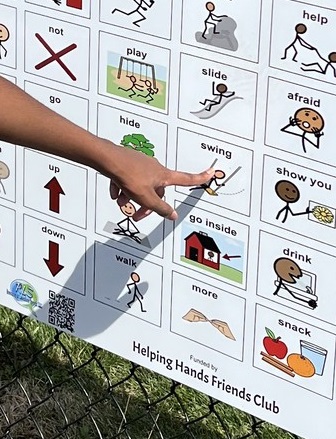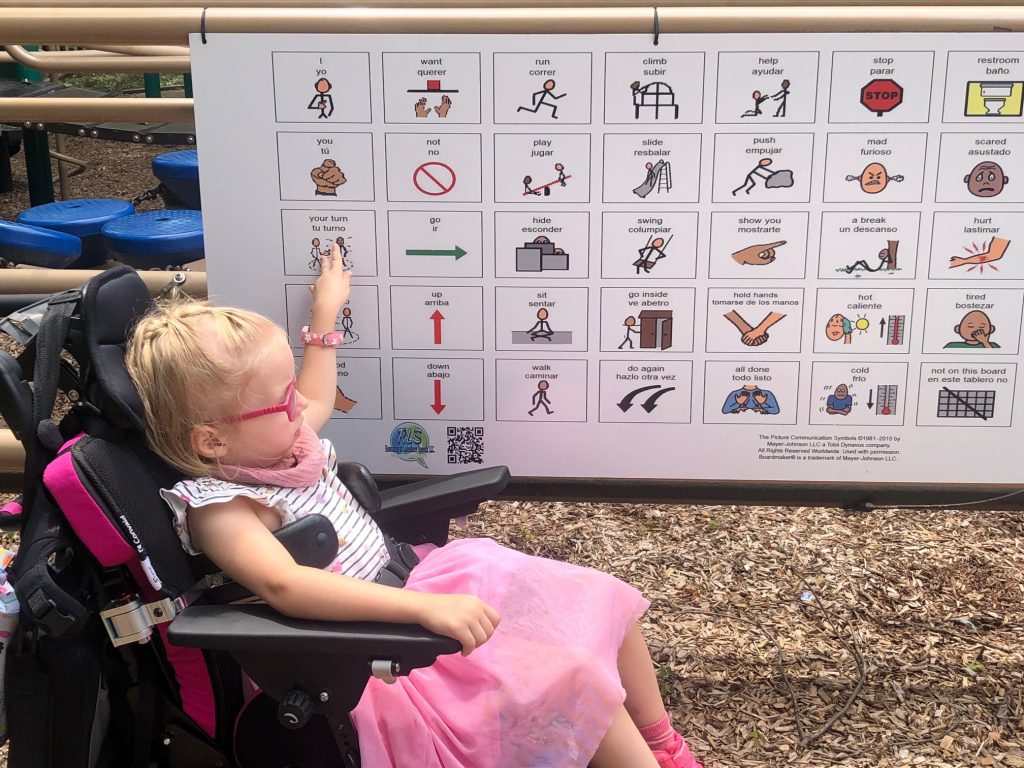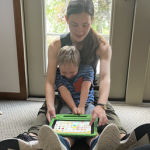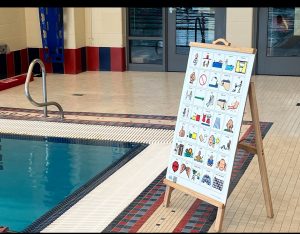
The positive impact that Augmentative and Alternative Communication (AAC) tools have on children with communication differences is outstanding. Playground communication boards are a wonderful example of a tool that not only supports children in expressing their needs but also serves as an educational resource for communities. Nonprofit organizations and advocacy groups have a unique opportunity to use these boards as a way to raise awareness about AAC and promote inclusivity for all children.
In this post, we’ll explore how nonprofits can utilize playground communication boards to educate communities, along with some real-world examples of organizations making a difference.
Playground Communication Boards as Educational Tools
Playground communication boards are visual displays that feature symbols, pictures, and words, helping children who have difficulty speaking or understanding spoken language to communicate. These boards can be used by children with communication disabilities, but they also have the potential to educate the general public about AAC. By placing communication boards in public spaces, nonprofit organizations can help demystify communication disabilities and show how AAC tools work in real-life settings.
Why does this matter?
Many people are unfamiliar with AAC and may not realize the challenges faced by children who use alternative ways to communicate. Playground communication boards not only serve the immediate need of facilitating communication on the playground, but they also invite other children and adults to learn how these tools function. This exposure encourages a greater understanding and acceptance of different communication methods.
How Nonprofit Organizations Can Make an Impact
Nonprofit organizations and advocacy groups are in a unique position to lead the way in spreading awareness about AAC through playground communication boards. Here are some key ways they can make a difference:
Purchasing and Donating Board:
Nonprofits can partner with local governments, schools, or community centers to purchase communication boards and donate them to public playgrounds. By doing so, they ensure that the boards are accessible to everyone in the community.
Hosting Educational Events:
Nonprofits can use playground communication boards as focal points for educational events or workshops. These events can be used to demonstrate how AAC works and provide hands-on experience for both children and adults. For example, a local advocacy group could organize a “Playground Day,” where they teach families how to use the boards and explain their importance.
Collaborating with Schools and Speech-Language Therapists:
Nonprofit organizations can work with local schools and speech therapists to ensure that playgrounds equipped with communication boards are included in educational programs. This kind of collaboration can create a broader support system for children with communication differences.
Real-World Examples of Nonprofits Supporting Communication Boards
There are already several inspiring examples of nonprofit organizations taking the lead in bringing communication boards to playgrounds. One such organization is Communication 4 All, a nonprofit focused on providing AAC resources to underserved communities. Recently, they partnered with local governments in various cities to install communication boards in playgrounds, ensuring that children with communication needs have a voice in these public spaces.
Another great example is The Arc, a nationwide organization dedicated to supporting individuals with intellectual and developmental disabilities. The Arc chapters across the U.S. have been involved in advocating for inclusive playgrounds that feature communication boards. In collaboration with speech therapists and community leaders, The Arc helps raise awareness about the importance of these boards and their role in creating a more inclusive society.
Creating Lasting Awareness Through Advocacy
When nonprofit organizations advocate for playground communication boards, they do more than provide a physical tool; they help foster a culture of acceptance and understanding. Every time a child uses a communication board on the playground, it’s an opportunity for other children and parents to learn about AAC and communication disabilities. This kind of awareness helps reduce stigma and encourages inclusivity.
Raising awareness isn’t just about the board itself—it’s about starting conversations. Playground communication boards can spark discussions among parents, teachers, and children about the various ways people communicate. Nonprofits can lead these conversations, providing valuable education and resources that promote inclusion.
The Role of Advocacy Groups in Expanding Access
While nonprofit organizations play a crucial role in raising awareness, advocacy groups are equally essential in ensuring that playground communication boards become a standard feature in public spaces. Advocacy groups can work directly with local municipalities to pass policies that promote accessible and inclusive playgrounds.
For example, a group like Parents for Inclusion can petition their city council to include communication boards in all newly constructed playgrounds. By joining forces with other advocacy organizations and local community members, these groups can have a lasting impact on creating more inclusive environments for children of all abilities.
How You Can Get Involved
If you’re a parent, caregiver, or community member who believes in the power of playground communication boards, there are several ways to get involved:
Support a Nonprofit:
Partner with a local nonprofit that focuses on AAC or inclusivity, and ask how you can help advocate for playground communication boards.
Donate:
Many nonprofits accept donations to help fund the installation of communication boards. Even small contributions can make a big difference in a community’s ability to create inclusive spaces.
Advocate Locally:
Join forces with local advocacy groups to petition for playground communication boards in your area. The more voices that speak up, the more likely your local government is to take action.
Conclusion: Building Inclusive Communities with AAC
Playground communication boards are more than just a resource for children with communication disabilities—they are an educational tool that can raise awareness and foster inclusivity in communities. Nonprofit organizations and advocacy groups are at the forefront of this movement, helping to ensure that all children have the tools they need to communicate effectively.
By continuing to advocate for the installation of playground communication boards and spreading awareness about AAC, we can build communities that are more inclusive, understanding, and supportive of children with communication disabilities.
Together, we can make sure every child’s voice is heard—one playground at a time.









